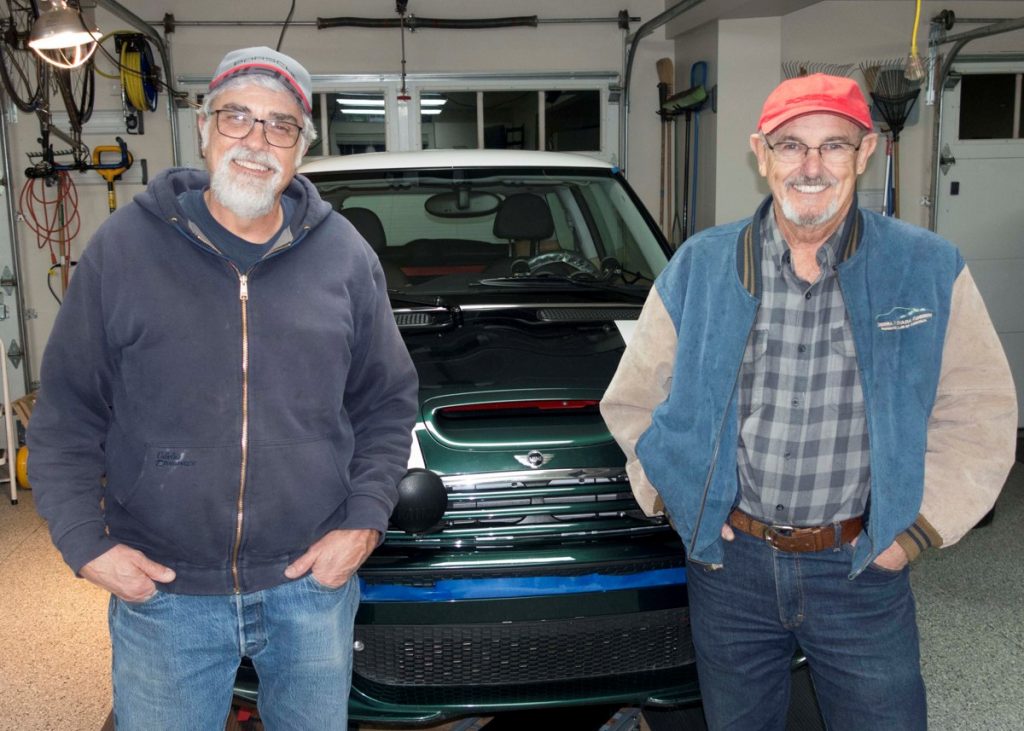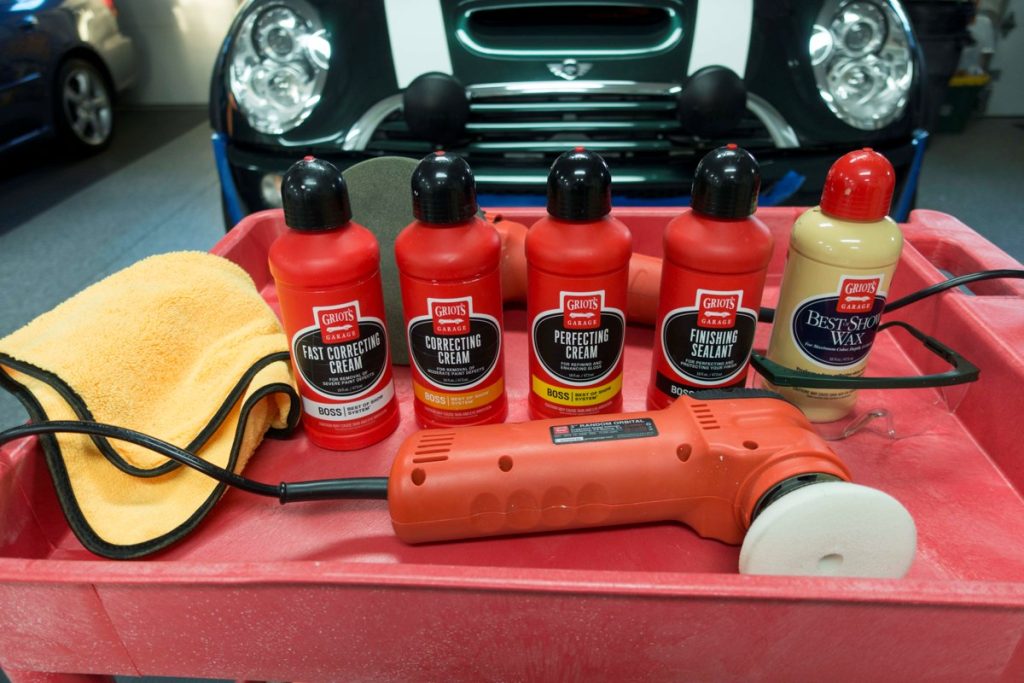
The second Flash Technical Session was held Tuesday evening, January 23 and focused on paint correction. What is paint correction? It is the process of removing light paint surface imperfections via the application by an orbital buffer of compounds and polishes. The primary targets are paint swirls, light scratches or scuffs, oxidation, and the like. Next time you wash your car, take a look at the light reflecting off the paint surface. You might be surprised what you see. The goal of paint correction is to significantly reduce or eliminate those marks.
The primary tool for paint correction is an orbital polisher (aka dual action polisher). Unlike the early buffers that simply go round and round, orbital polisher incorporate a back and forth motion into the rotation that greatly increases the tool’s effectiveness and lessens the chances of burning through the paint.
The paint surface has to be completely clean before polishing can begin. This can be achieved by washing the car thoroughly with dish soap and, optionally, wiping down the body panels with a 50/50 mix of isopropyl alcohol and water.
Attached to the polisher are foam pads on which fine abrasive compounds are applied. There are a variety of foam pads and compounds. Pads vary in density and thickness while the compounds vary in their aggressiveness. Part of the confusion when first starting this process is figuring out which pads go with which compounds and which order should they be used in? The answers to these questions are outside the scope of this article, but fortunately there are plenty of online video tutorials and manufacturers are getting better at providing a roadmap for using their products.

During the tech session correction techniques were demonstrated on a door panel. The panel had a number of issues: paint swirls, scuffs, light scratches and a corner that was best described as hazy. By using aggressive techniques on the problem spots and mildly aggressive techniques on the majority of the panel, the appearance of the door was dramatically improved. The scuffs, scratches and haze virtually disappeared.
A few of the swirls remained, but sometimes it is not worth shooting for perfection – take satisfaction in achieving a 90% improvement! After all, when dealing with paint you want to be cautious.
Flash tech sessions like this one are designed to be informal gathering of club members to share automotive knowledge. If you’d like to host a flash tech session, contact Deven Hickingbotham.



